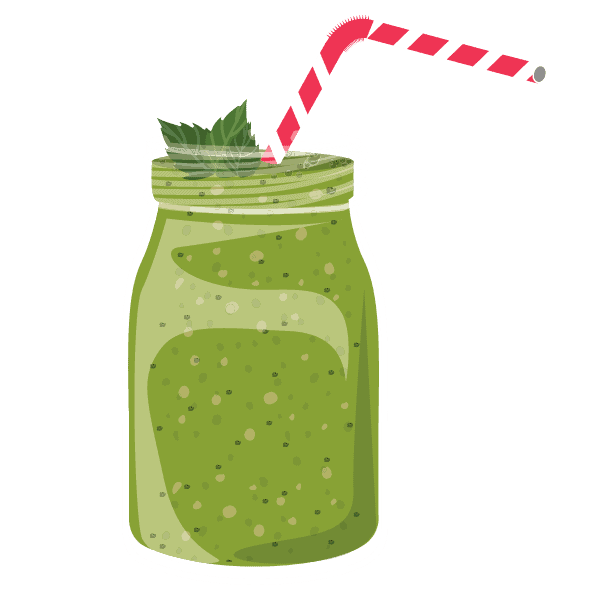If you’re considering buying a juicer, read this article first. I’ve broken down the difference between masticating vs centrifugal juicers, how juicers work and when one might suit you over the other. I’ve also included twin gear juicers in the comparison.
What Does A Juicer Do?
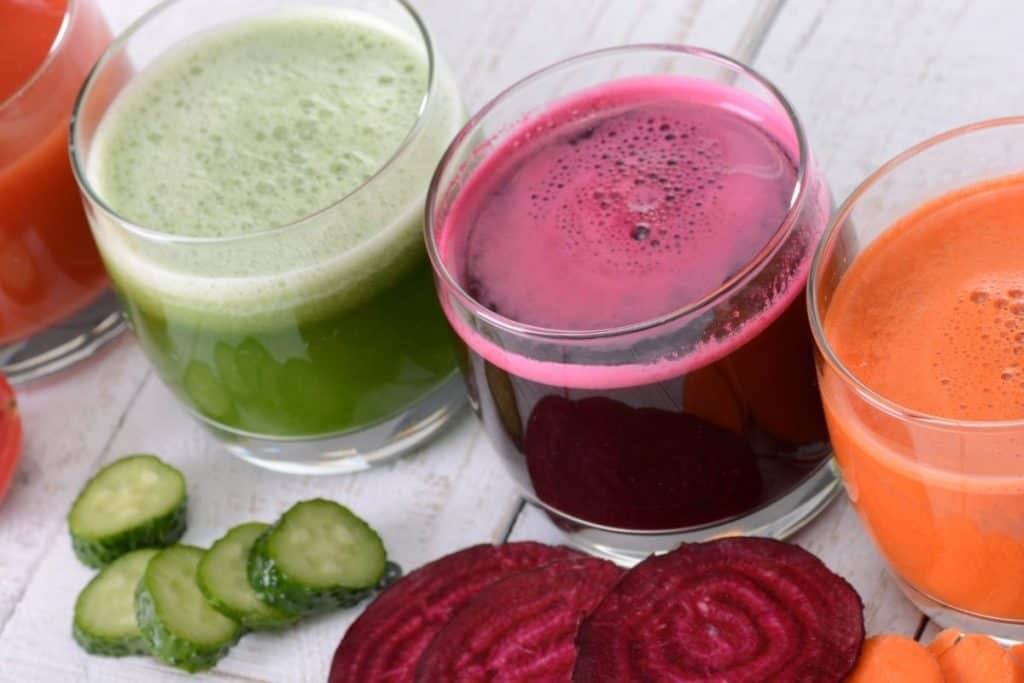
A juicer is a machine that can extract juice from fruits, vegetables, and herbs. In general, it squeezes the juice out while leaving the pulp behind. This means that you get only the juice from the fruit or vegetable that you fed it with.
The entire process as to how juicers work, including the mechanism that makes it function, depends on the type of juicer.
It was in 1930s when the first juicing machine was invented. Since then, the idea of juicing as part of the diet has continued to flourish.
There has been a wide array of innovations to enhance the performance of traditional juicers. These include the masticating, centrifugal, triturating juicers, and many others.
What Is A Masticating Juicer?
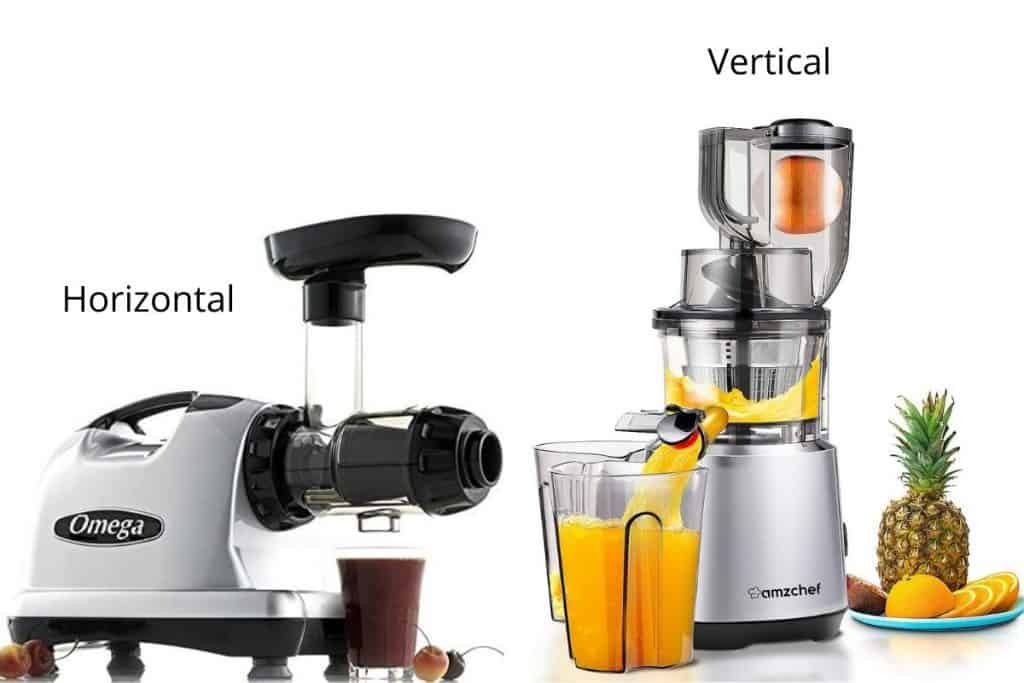
A masticating juicer is a juicing machine that powerfully crushes the fruit or vegetable that you feed in it.
It is typically designed with a single auger that does the mashing and grinding part, ultimately squeezing out the juice.
It has two shafts that gather the juice and pulp separately. The slow pace of the process of masticating juicers makes the juice extraction more efficient, ultimately, collecting more juice from the fruits and vegetables in comparison to a centrifugal juicer.
In a study conducted in 2017, researchers compared the nutritional value of juice extracted from grapes using three different methods. One of which used the masticating juicer, which showed higher nutritional quality than the other methods.
What Is A Centrifugal Juicer?
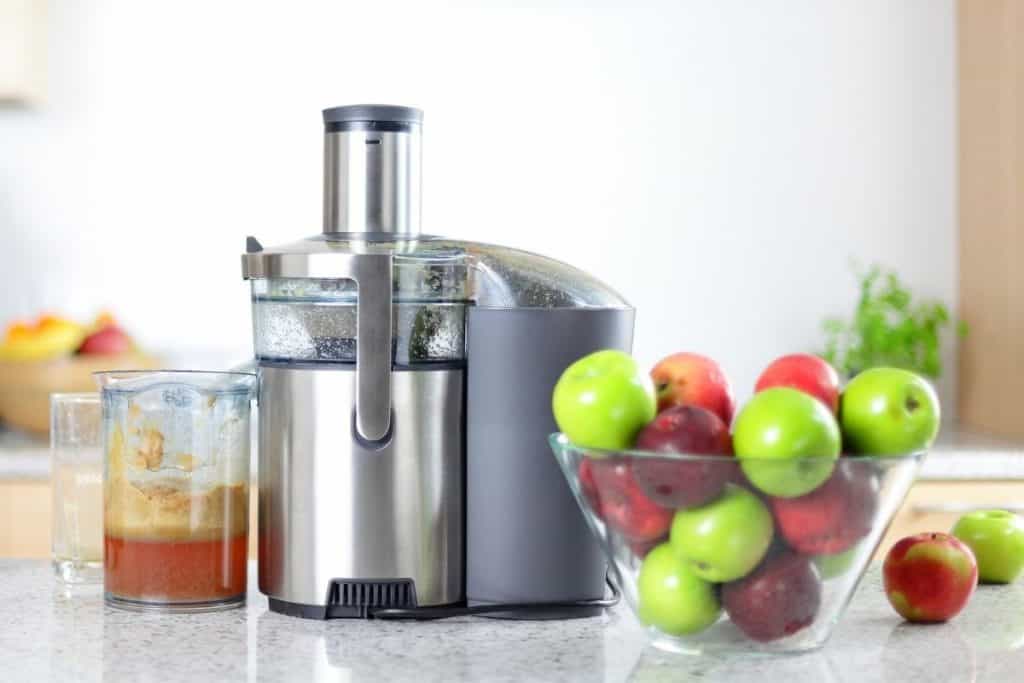
A centrifugal juicer uses sharp, flat blades that spin at fast speeds to chop the fed material. It uses the same system (centrifuge) as in washing machine in separating the juice from the pulp (think spinning the water out of the clothes – minus the shredding).
It includes a spinning of the food that reaches from 3,000 to 6,000 revolutions per minute. Some brands function even faster than that.
Because of this high-speed spin, the centrifugal juicer is much faster at processing juice than a masticating juicer. The faster process tends to create more foamy juice and extract less juicer overall compared to masticating juicers.
Two of its main selling points are its budget-friendly price and quick-processing ability.
What Is A Slow Juicer?
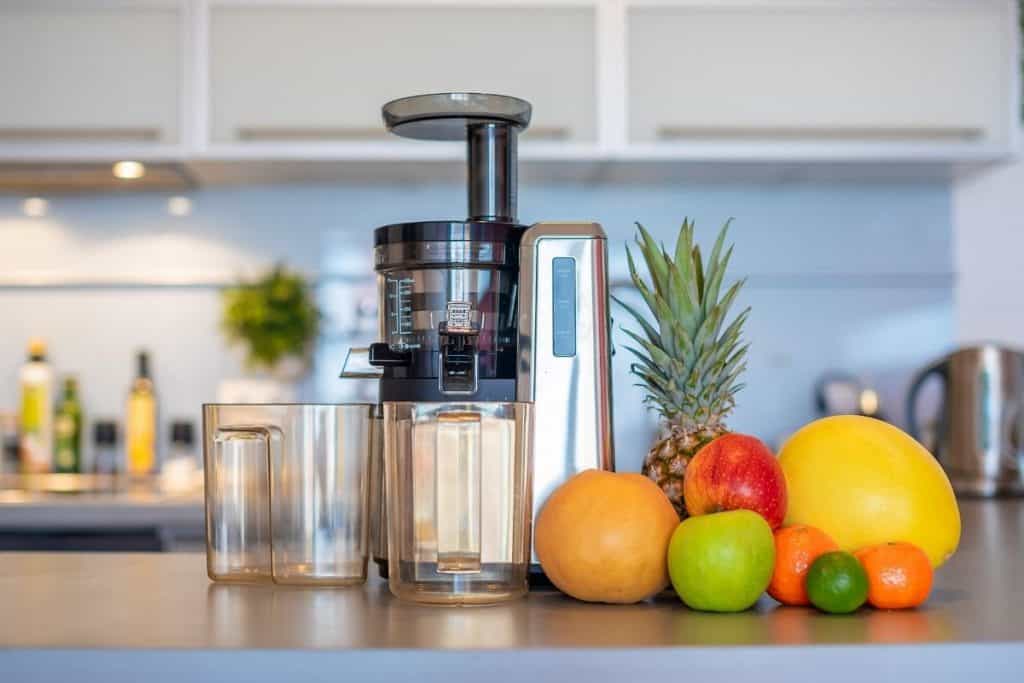
Slow juicer, as it names suggests, operates in an unhurried manner. It crushes the food to squeeze out the juice. The most popular kind of slow juicer is the masticating juicer, which is also termed as a cold press juicer.
These three practically mean the same. The downsides of this type include its higher price and slower processing time.
However, masticating juicers yield more juice from fruits and vegetables vs centrifugal juicers, thus obtaining higher nutritional content.
What Is An Auger Juicer?
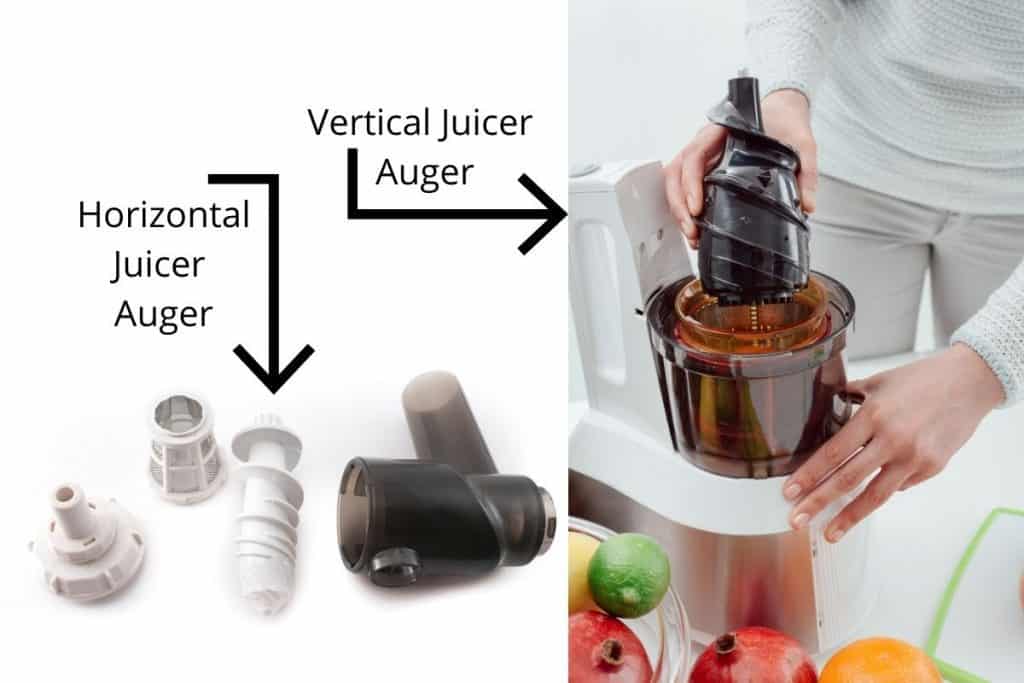
An auger juicer is a general term for juicers that use a single auger to process juice. A perfect example of this is the masticating juicer.
An auger is like a big drill bit or screw, which presses and squeezes the food to obtain juice from it. Virtually all auger juicers operate slowly.
Therefore, they also provide the same advantages as the slow and steady juicers.
Masticating Juicer vs. Centrifugal Juicer: Which Is Better?
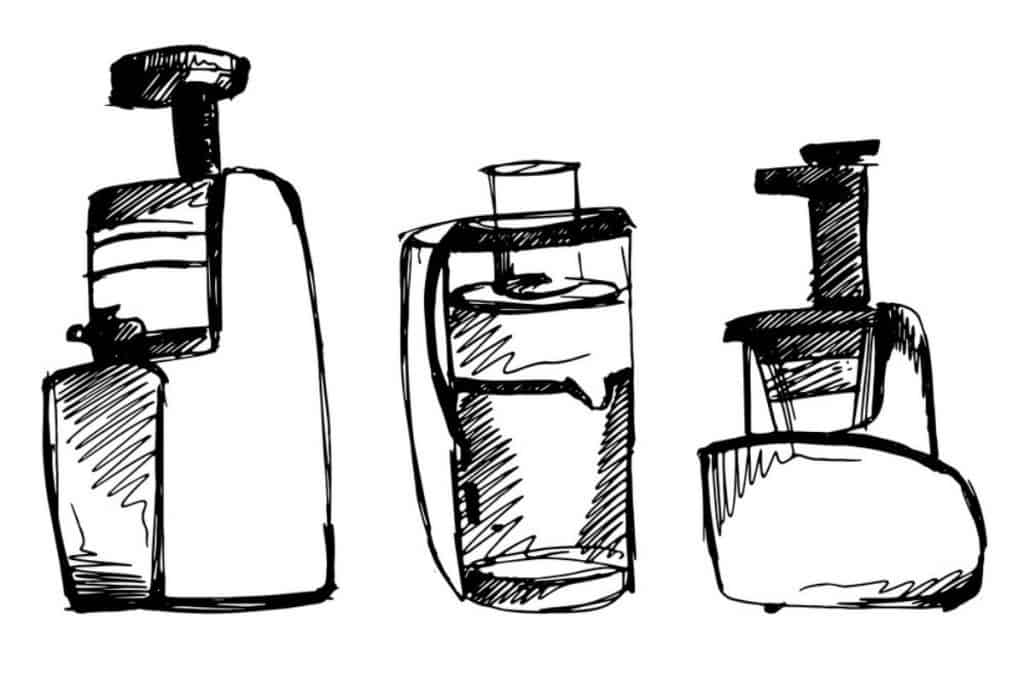
This is a battle of two of the most popular types of juicers available in the market.
These two differ in the way they process juice and in their carried upsides and drawbacks. Each of them has unique attributes that prove why they are preferred by many.
In terms of the nutritional quantity you could acquire, the masticating juicer is a better choice.
Studies have shown that slow and steady juicing, such as in masticating juicers, generally offers a slightly higher amount of nutrients compared to the fast process.
This is because it produces more juice with remaining pulps that add to the number of vitamins, minerals, and fiber.
Furthermore, there’s less noise, heat, oxidation accompanying the process, which is beneficial for the quality of both your juice and your machine.
Less oxidation time lengthens the shelf-life of the product.
For busy individuals, centrifugal juicers are more convenient. They produce juice in just a few minutes, quicker than masticating juicers. Centrifugal juicers have fewer parts, and so they can be assembled and disassembled readily, making the machine user-friendly and easy to clean.
Centrifugal juicers are also cheaper and are widely accessible in many shops. Therefore, they save you effort, time, and money.
The better choice depends on your preference, with close consideration about what each type is best known for.
Is Masticating Juicer The Same As Cold Press?
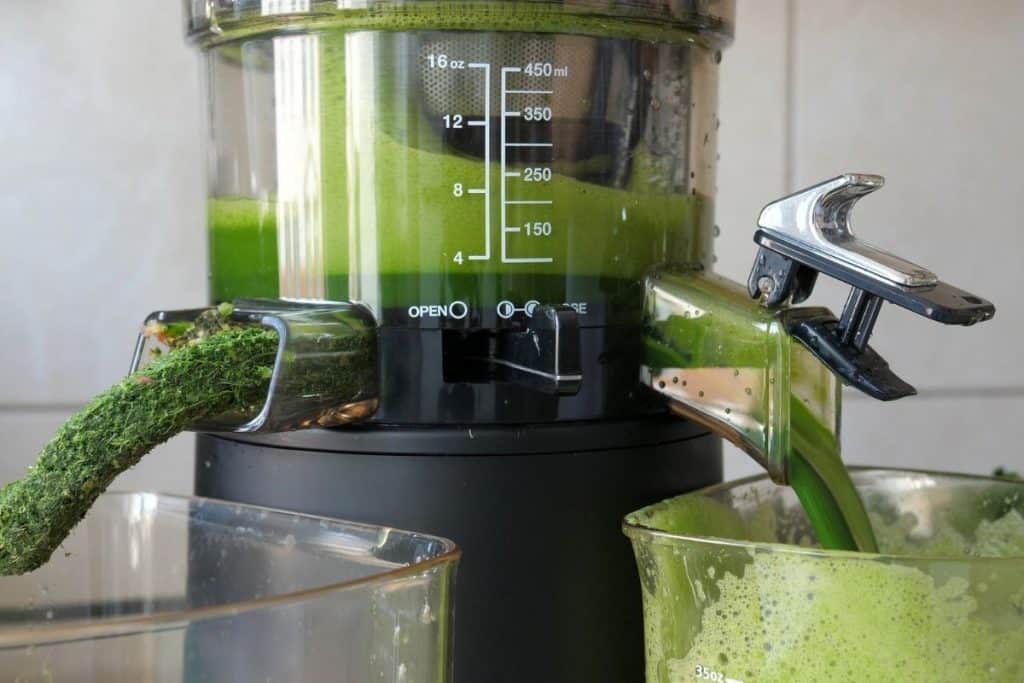
Masticating juicers are similar to cold press juicers in the way how they process the materials fed.
The term “cold press” comes from the fact that cold press juicers apply pressing force to extract juice from fruits or vegetables without heat application or reaction.
The pressing is done by hydraulic or pneumatic power. The slow procedure results in a lack of heat and oxidation, which are argued to be the cause of nutrients loss.
The traditional juice press, from which the cold-pressed term originated, is said to create the purest, smoothest juice with minimal pulp.
In masticating juicers, the pressing portion is done by an auger rather than an actual press. Masticating juicers are still considered as cold press juicers by many.
Do Centrifugal Juicers Destroy Nutrients?
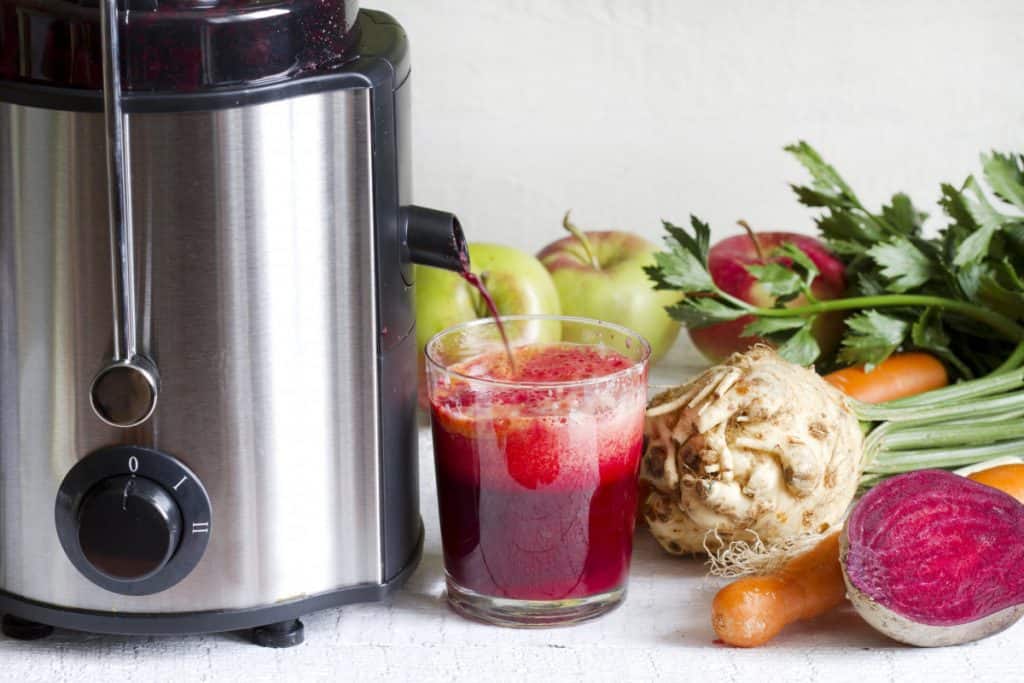
Juicing in itself, could potentially reduce the levels of nutrients, especially fiber. This is because the juicers extract and separate the juice from the pulp, which holds most of the fruit’s fiber.
It may also eliminate some polyphenols and antioxidants found in the piths and skins of many fruits and vegetables. There’s a chance that these parts are not effectively included in the extraction.
Therefore, you get lesser nutrients compared to when you eat the whole fruit or vegetable.
Centrifugal juicers, specifically, are subject to many arguments questioning if they could indeed destroy nutrients. Since centrifugal juicers include a fast pace of spinning of metal blades, the heat and oxidation brought by this process are linked to altering the nutritional value of the juice.
This is a theoretical claim based on the fact that excessive heating kills enzymes that stimulate digestion. But there is no scientific evidence saying that centrifugal juicers can definitely destroy these bioactive compounds.
Generally, enzymes are only deactivated when subjected to high temperatures (above 118 degrees Fahrenheit). Since centrifugal juicers get the job done quickly, experts think that the heat produced is not enough to actually kill the enzymes or oxidize the nutrients.
In summary, centrifugal juicers could alter the nutritional amount but in a minimal manner that is almost negligible.
It is best to drink the produce right after juicing to avoid further oxidation and enzyme depletion. The longer the juice is stored, the more the nutritional value decreases.
Masticating vs. Centrifugal Juicers: Fiber In Juice
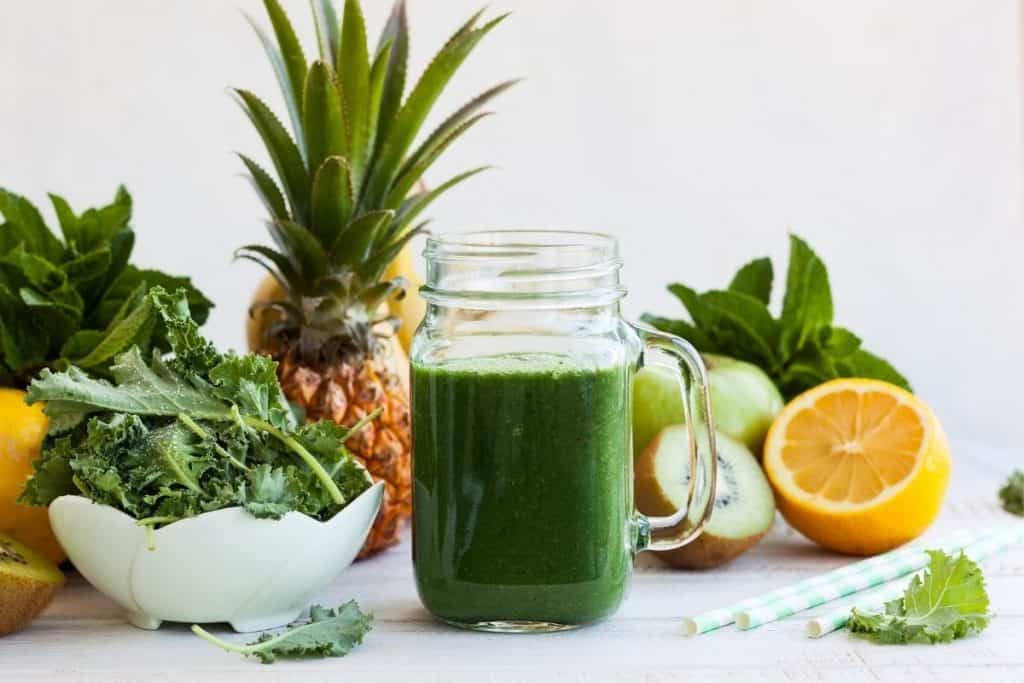
Fruits and vegetables are rich in fiber that provides a lot of benefits to the body, such as normalizing bowel movements, regulating digestion, and promoting weight loss.
Juicing could potentially reduce the amount of fiber you are consuming.
Masticating juicers yield more juice with dry pulp. This indicates that more fiber and nutrients are included in the extraction process.
With centrifugal juicers, the pulps left behind are often very moist. This means that it is not capable of maximizing the obtained juice to include higher quantities of fiber.
Overall, masticating juicers could generally provide more fiber than centrifugal juicers.
Which Juicer Extracts The Most Juice?
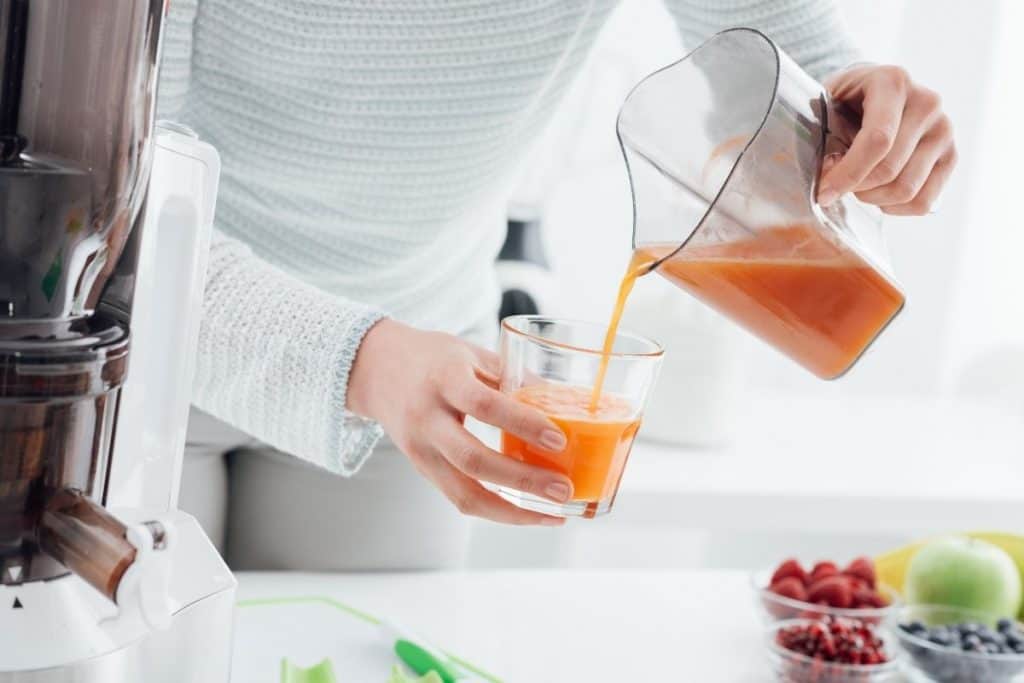
Masticating juicers generally produce more juice and less foam than centrifugal juicers. The slow turning of the auger allows the machine to take its time to squeeze more juice.
The slower and more meticulous the process is, the higher the juice yield. In turn, more nutrients are extracted from the fruits and vegetables, but at a slower pace.
How To Choose A Masticating Juicer
Durability
Durability is one main factor that you should consider in buying a masticating juicer or any type of appliance for this matter.
If you are a beginner juicer, you can pick up great masticating juicers on Amazon for less than $150. We have two review articles to help you choose:
In general, the juicers at the lower end of the market have a warranty of around 2 years, and I would expect a juicer to last about this amount of time with regular use.
Masticating juicers have augers that are either a toughened plastic or ceramic. Ceramic augers offer more durability over the plastic counterparts.
Construction Materials
The quality of any machine also relies on the materials used to manufacture it.
Most commercially available masticating juicers are constructed either with plastic, steel, or carbon-infused materials. Naturally, steel and carbon fibers are more expensive than plastic.
Metallic housing is preferable if you need to use your juicer regularly or if you want it to last for years.
Stability of the juicer on the benchtop is also something I hear people complain about a lot, particularly the juicers at lower price points.
These juicers may be lighter than their more expensive, better quality counterparts and in turn tend to rock, shake or make noise more often during use.
Most juicers under $150 weigh around 10 pounds. At the higher end of the market, the weights of the juicers can be up to 20 pounds, providing more stability.
Feeding Chute Size
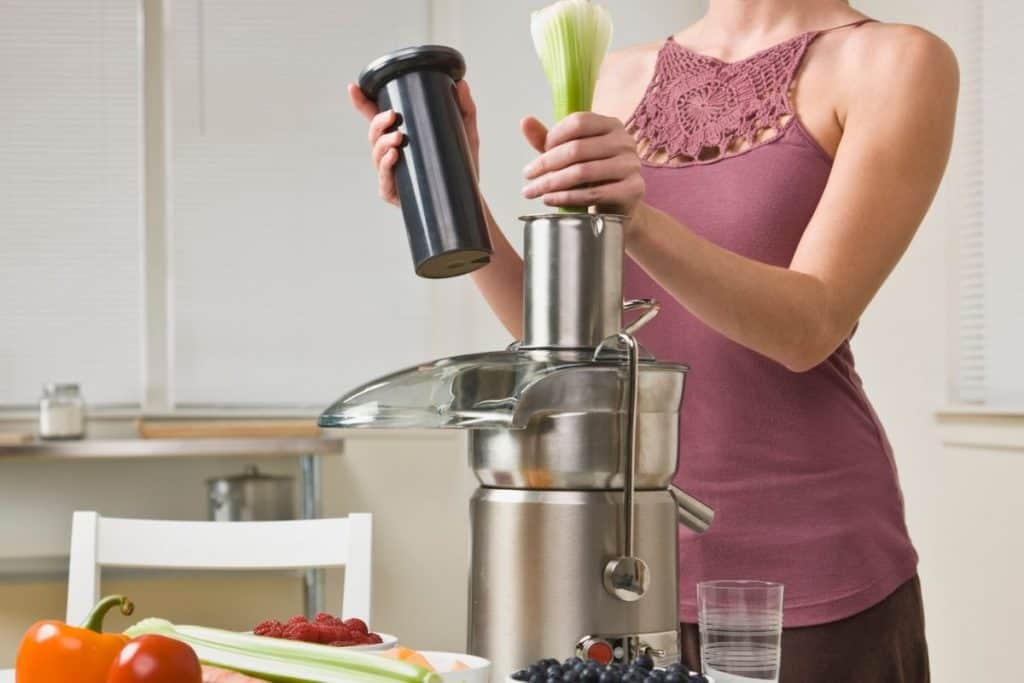
At first, this might not spark interest to you while looking for the best masticating juicer.
But when you have already tried one with a small feeding chute, you will understand why its size is one thing to consider before purchase.
With a narrow feeding chute, must cut your fruits and vegetables into smaller pieces before juicing them. You will also need to feed into the chute slowly, and wait for the masticating juicer to process.
This will increase the preparation and processing time, especially when you have to juice large quantities.
Often, the added prep and processing time is one of the reasons why users switch back to centrifugal juicers from masticating juicers.
If you want to juice quickly, clean up and get out the door in the morning, you will need to allow a little more time when using a masticating juicer.
Replacement Parts
There is generally about 6 removable parts to masticating juicers. With regular use, augers and juicing screens are usually the first to wear out and require replacing.
If you are within the warranty period offered by the manufacturer, this may be replaceable under warranty, but if you are outside this period and the manufacturer doesn’t sell replacement parts, this leaves the juicer unusable.
This then means if you want to continue juicing, you need to purchase another juicer.
Choosing a juicer that has replacement parts available for purchase is always a recommended option.
Twin Gear vs. Masticating Juicer
Masticating juicers are usually single-geared. The emergence of juicers with twin gears results in the enhancement of juicing, with even more nutrient extraction.
Twin gear juicers work with two interlocking gears that are aligned close to each other.
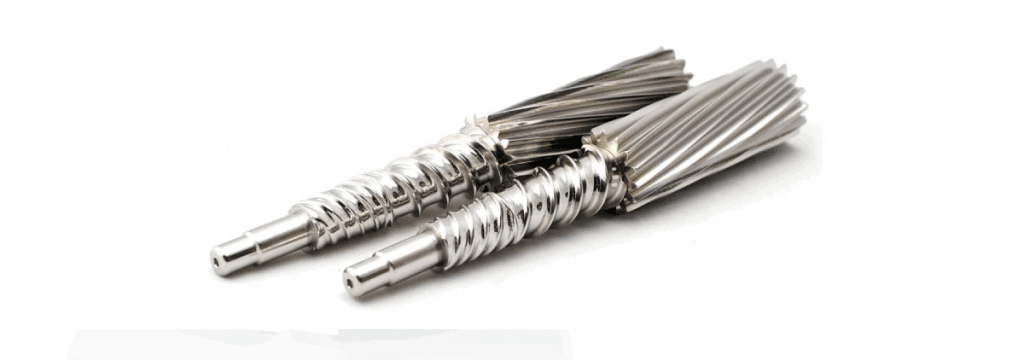
Twin gear and masticating juicer follow a similar method of juicing. But twin gears operate at a slower speed than the masticating juicer.
This results in an even lesser heat and air trapped in the food being processed. Therefore, they are more efficient, and they give drier pulps, resulting in higher juice yields and more nutrition.
However, this added feature entails a higher price and requires more clean up time.
It’s ultimately a personal choice to favor quality over price or the other way around.
Nonetheless, both masticating juicers and twin gear juicers usually have many parts that can be used for different purposes. They can chop veggies, make noodles and food pastes, and grind nuts.
Twin Gear vs. Centrifugal Juicer
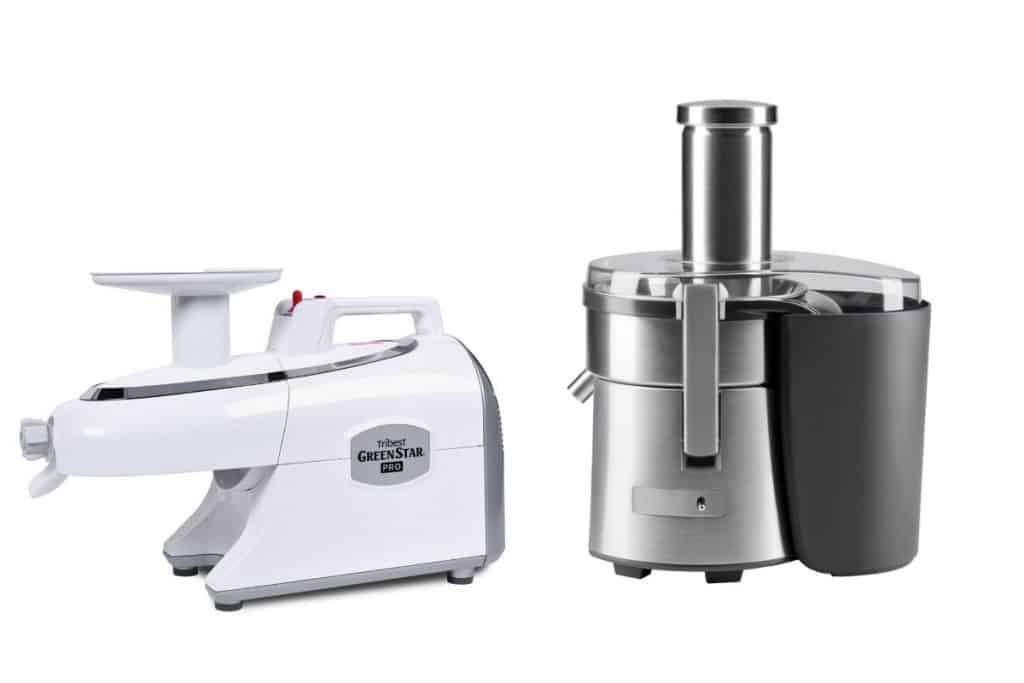
Twin gears offer almost the same advantages as the masticating juicer, with a more enhanced quality of juice produced.
That being said, it defeats the centrifugal juicer in similar aspects as the masticating juicer does.
Twin gear juicers processes higher quality juice in terms of nutritional value than the centrifugal juicer. Twin gear juicers can also juice food that centrifugal juicers cannot, for example celery, spinach, wheatgrass and leafy green vegetables.
Centrifugal juicer’s finished products tend to be foamier, which you might find unappealing. The pulp is also less dry with a centrifugal juicer vs twin gear juicer.
Centrifugal juicers are far more affordable than twin gear juicers. The processing time for making juice with a centrifugal juicer is much faster than a twin gear juicer.
In short, twin gears provide you more fiber and nutrients, while centrifugal juicers save you time and money.
Masticating vs. Triturating Juicer
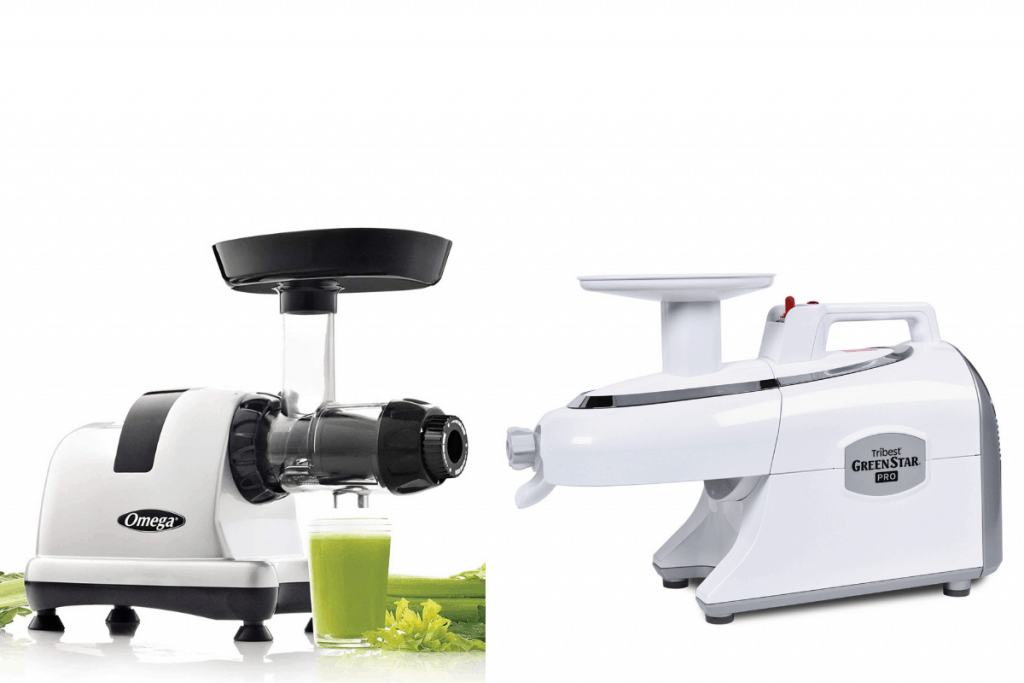
The triturating juicer is just another term for twin gear juicers. To triturate means to crush in fine powder.
The whole process is divided into two steps. The first one involves grinding the fed fruit or vegetable as it runs through the rotating pair of gears. This releases initial extracts.
The second step is where the ground or crushed fruit is pressed to further squeeze out the remaining juice. Through these two processes, the expelled pulp will practically be moisture-free.
Both masticating and triturating juicers offer better extraction of juice. However, a triturating juicer is considered to be the most effective. Triturating juicers are also quite expensive.
Triturating, or twin gear juicers is said to produce the purest and healthiest juice from almost any type of fruit or vegetable, soft or hard.
Choosing a twin gear juicer is generally reserved for those that juice daily, over long period of time and prioritize quality of both machine and juice extraction, over price.
In Summary
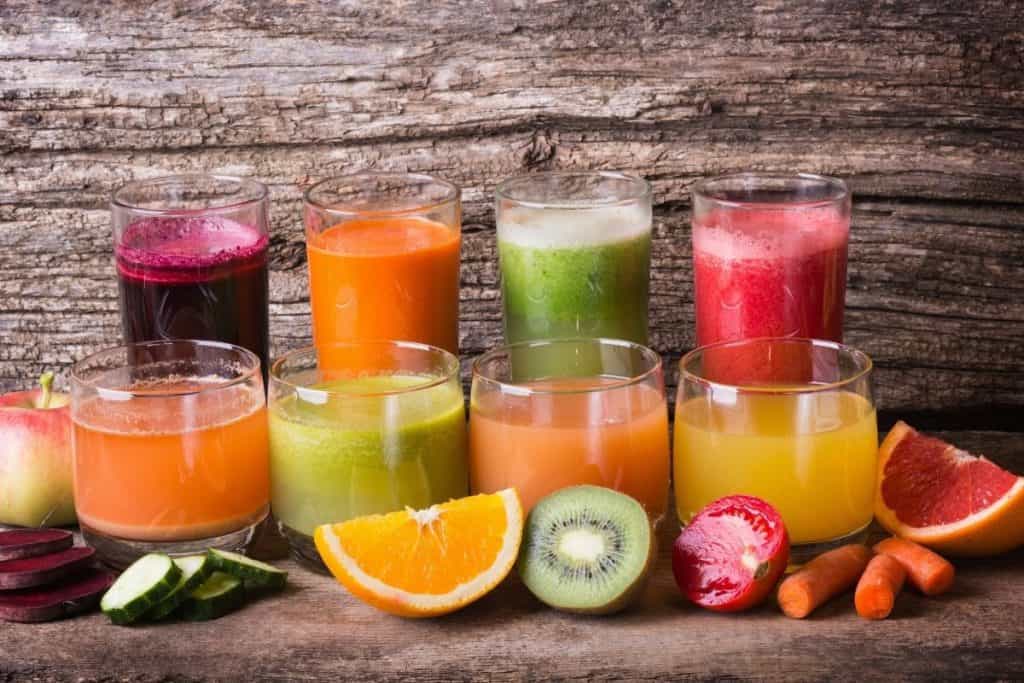
Here’s a list of instances denoting the unique characteristics of each type of juicer that will help you decide which one to buy or use.
Use a Centrifugal Juicer If:
- You opt for faster processing of your juice.
- You favor machines that are easy to handle and operate.
- You prefer a juicer that is easy to clean.
- You need a juicer that could work well with big slices of fruit or vegetables.
- You want a cost effective juicer that is readily available in the market.
Use a Masticating Juicer If:
- You want to get more extracted juice with less foam.
- You want juice with exceptional quality, nutrient-wise.
- You don’t like your juice to undergo oxidation while in the process.
- You prefer a quieter machine.
- You want the option to make smoothies, fruit sorbets and nut butters (some masticating juicers have this function, not all)
- You have to store the product for a few hours or days before drinking.
- You need to juice celery or leafy vegetables.
Use a Twin Gear Juicer If:
- You’re not in a hurry, and you want to maximize the amount of juice you get.
- You want to maximize the nutrients you get.
- You need to process both hard and soft materials, including celery, wheatgrass and leafy green vegetables.
- You need to store the juice for up to a few days.
- You want a more efficient and quieter model.
- You prioritize the finished product quality despite the higher price.
- You want multi-function uses, such as grinding coffee beans, grinding herbs, making pasta or bread sticks.
- You want to buy one juicer that is likely to last you decades or are a serious juicer that often benefits from juice cleanses.
The best type of juicer largely depends on your needed and preferred attributes.
There are many factors to consider, including the price, the juice quality, the accessibility, and the ease of operation.
When choosing a juicer, it all comes down to which factors weigh the heaviest for you. I hope that I’ve been able to assist with making your decision between juicers and learning the differences.
Make sure you check out my specific juicer reviews before you buy!


